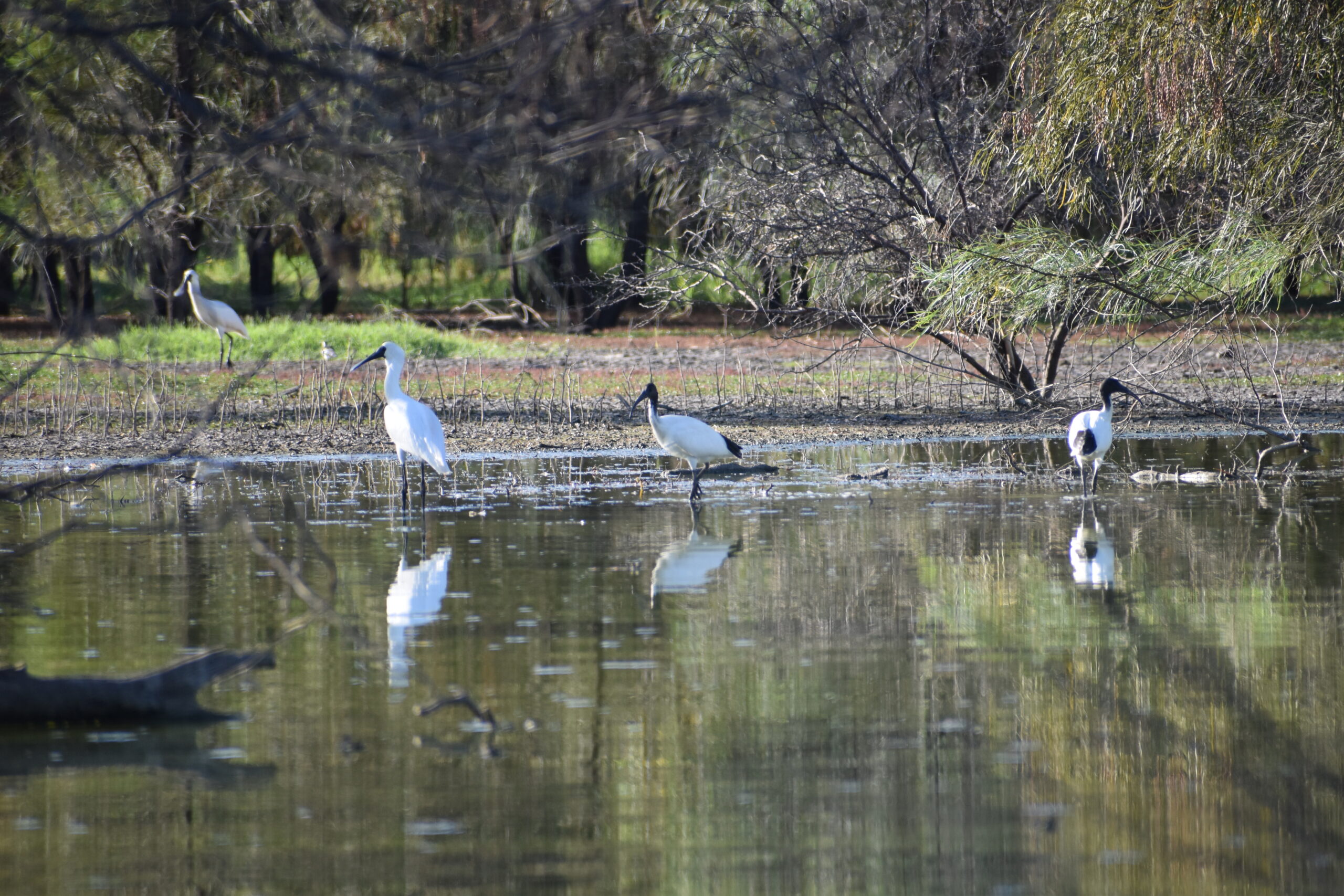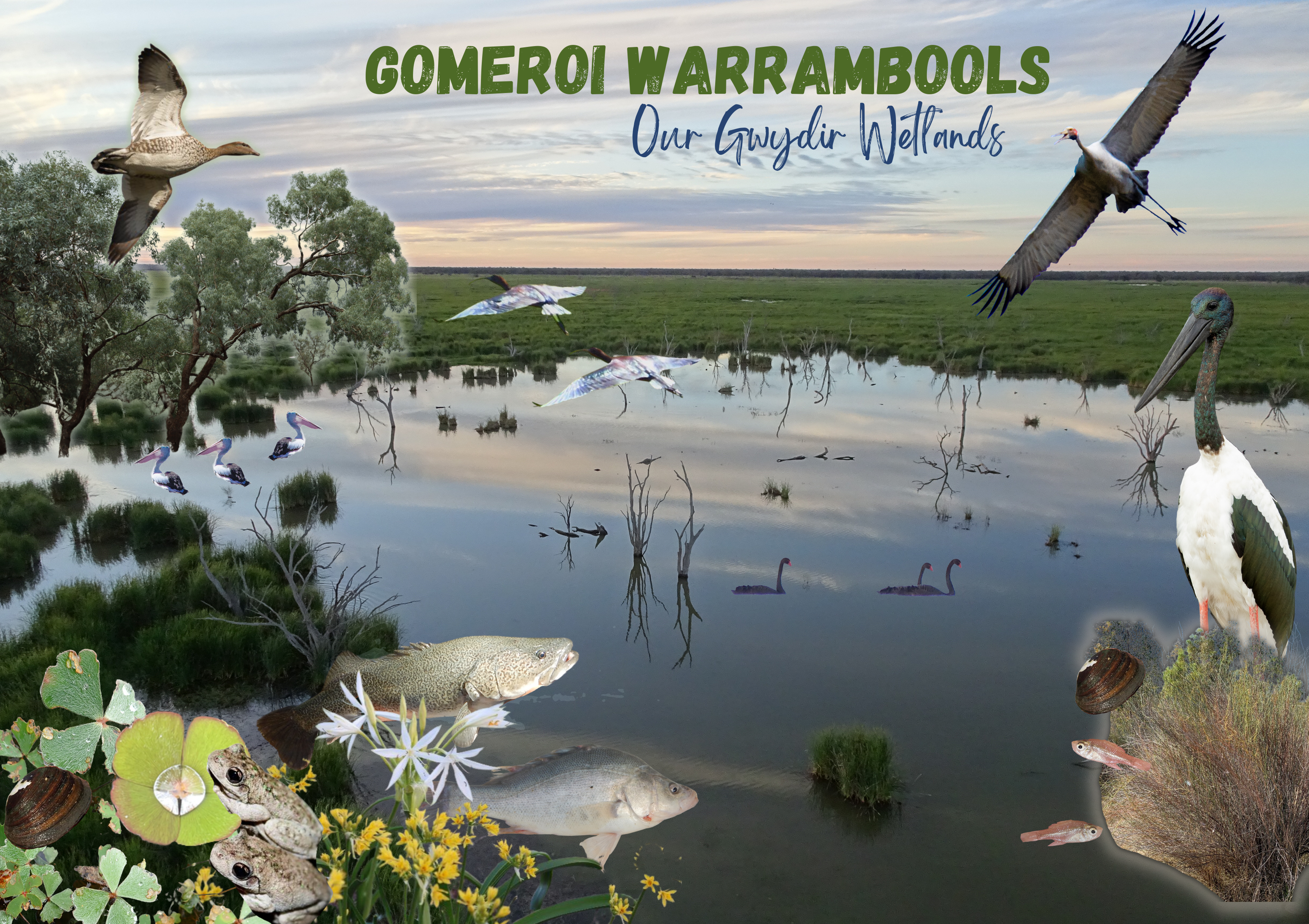Traditional Gamilaaraay Language of the Gomeroi nation used in this article (H. White & B. Duncan – Speaking Our Way, M. Mckemey).
The Commonwealth Environmental Water Holder’s (CEWH) Science Program funds the Flow Monitoring, Evaluation and Research (Flow–MER).

The Gomeroi Peoples Nation uses the traditional Gamilaaray Language, and this is the language we use for our Gwydir Flow-MER stories.
The Gwydir Warrambools (Wetlands) make up a part of the Gomeroi Peoples Country. Its water is the life source of the Gomeroi People and has been for thousands of years.
To begin understanding the complexities of the warrambools, Gomeroi Traditional Owner Liz Taylor shared with the Flow-MER team some of the intricacies of her culture. With Liz’s cultural knowledge and the scientific knowledge collected over the last 10 years in the Gwydir as part of the Flow-MER program, we pieced together the main cultural and environmental components that make up the Gwydir Warrambools.
The Gwydir Warrambools are significant for many reasons. For the Gomeroi People the warrambools have always provided plants, animals, resources, meeting places, and so much more.
For the plants and animals the warrambools are also significant. For instance, after high rainfall events colonial-nesting waterbirds such as royal spoonbills (Platalea regia) and Australian white ibis (Threskiornis moluccus) come to breed in their thousands (Figure 1). The warrambools are also home to a number of threatened ecological plant communities. These are but a few of the many important features of the Gwydir Warrambools.
We have developed an interactive story map to capture these key elements. To explore and learn more about the cultural and environmental significance of the Gwydir Warrambools follow this link: Gomeroi Warrambools in the Gwydir Wetlands.
In additional to this learning page, we have also created a poster with some of the key species found in the Gwydir Warrambools (Figure 2). Some of these species include the black-necked stork (Ephippiorhynchus asiaticus), guduu (cod) and gindjurra (frogs).

Managing water for the environment is a collective and collaborative effort, working in partnership with communities, private landholders, scientists and government agencies – these contributions are gratefully acknowledged.
We acknowledge the Traditional Owners of the land on which we live, work and play. We also pay our respects to Elders past, present and emerging.

